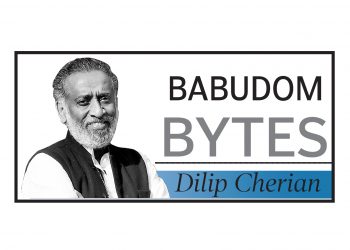It started, as many big stories do these days, with a tweet. A blunt social media post by a mid-sized trading firm announced that it was shutting down its India operations after weeks of alleged harassment by Chennai Customs. Not a formal press release, not a court filing, but a post that instantly set off ripples.
The Finance Ministry then intervened with its own tweet, stating that an inquiry would be held. Before long, a well-known analyst was hinting that the exercise was less about justice and more about warning others against going public. In the space of a few hours, a commercial spat had been elevated into a drama about governance, accountability, and reputation.
The real worry isn’t whether one company had a bad run-in with officials. That happens and usually gets sorted in hushed corridors. The worry is what the optics say: a business goes public with a complaint, the state responds with an inquiry announced on social media, and commentators suggest the whistleblower might end up punished for speaking out. It feels less like due process and more like a cautionary tale in the making.
And this is why the episode has legs far beyond Chennai port. International investors read these signals closely. If the moral of the story appears to be “keep quiet or face the music,” that’s not the kind of investor-confidence campaign India wants to be running. A minor customs dispute risks morphing into a global anxiety point about how complaints are handled.
Unless the inquiry is seen as swift, fair, and transparent, India might find itself explaining to the world why its digital-age governance appears suspiciously like a theatre of the ugly and absurd.
A peek into global babu ecosystems
Babus in India may be delighted, or perhaps mortified, to know that some of their lowly brethren, both here and abroad, have now been captured for eternity in their natural habitat. A recently released photobook offers an unfiltered, almost voyeuristic glimpse into the bureaucratic underbelly: rooms piled high with files, chai-stained tables, sagging chairs, and faces that seem halfway between resignation and quiet rebellion.
For those lucky enough never to have set foot inside a government office, the pictures are a revelation. They let you linger over spaces you’d otherwise sprint through — dim corridors where dusty ceiling fans drone louder than conversation or cubicles where the most exciting thing that happens all day is a paper jam. Yet, for millions around the world, these spaces are not exotic curiosities but a part of daily life, the frontline of citizen-state interaction.
Each frame tells a story not just of work but of inertia, survival, and ritual. The rooms themselves are characters, speaking of past decisions, postponed reforms, and fading hopes of digitisation. It’s bureaucracy as anthropology: fascinating, tragicomic, and eerily uniform across continents.
From Manila to Mumbai, the babu’s world is a parallel universe with its own logic, rhythm, and cluttered charm. These are the keepers of process, the gatekeepers of governance, immortalised not by performance reviews or audit reports, but by the gentle click of a camera lens. Perhaps it takes art, not reform, to finally make us look at the system long enough to see what’s really inside.
Can AI make babus future-ready?
The government’s decision to school babus in Artificial Intelligence is, in many ways, poetic. For decades, the fabled “steel frame” has thrived on paperwork, hierarchy, and procedural delays. Now, it is being asked to embrace algorithms, data sets, and machine learning models. Talk about culture shock.
Of course, AI training for civil servants is a necessary step. Policy today isn’t just about rules and regulations; it’s about crunching data, predicting outcomes, and delivering citizen services with precision. But no algorithm can fix a system that still runs on outdated file movement and a reflexive fear of innovation. AI in the hands of an inertia-prone bureaucracy risks becoming another decorative acronym — like MIS, ERP, or e-Gov before it.
The programme deserves credit for incorporating conversations around ethics, including bias, transparency, and privacy. If anything, these lessons are more urgent for India’s bureaucrats than the technical jargon. After all, a machine learning tool that inherits caste or gender biases from its data sets is no upgrade on human prejudice.
The real transformation will come only if these modules are linked to actual decision-making. Imagine AI helping a district magistrate predict flood risks, or a collector plugging leakages in welfare delivery. That’s where the technology justifies the hype.
Until then, training modules risk being a tick-box exercise, one more line in a babu’s mid-career résumé. AI can make India’s governance smarter. But it cannot replace the one thing our system chronically lacks: accountability.
By Dilip Cherian

